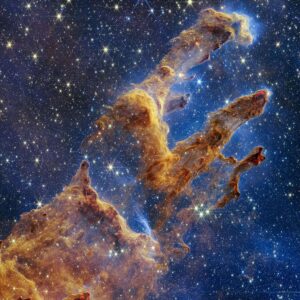Recently, I watched a Netflix documentary on the 15 year long mission to develop and launch the most powerful telescope in history, the James Webb.
🤓 (space geek alert!) 🤓🚀🚀🚀
Amber Straughn, from the team said:
‘It’s a trick of physics that we can look back in time. Telescopes are time machines. Light takes time to travel through space. Light from the sun takes 8 minutes to get to earth. So we are literally seeing things as they were in the past. Hubble is missing the first chapter in the 13.8 billion year story of the universe, Webb solves this.’
She also exclaimed:
‘I’ve poured my entire career into this, what if it doesn’t work? It’s a scary thought.’
This project had more single points of failure than the Apollo missions or Hubble telescope.
What’s a single point of failure?
Essentially it’s a flaw in the design, configuration or implementation of a system where just one malfunction will cause the whole thing to fail.
The James Webb telescope mission had 344 single points of failure….
104 to get into orbit…
192 as the telescope took the journey to the ‘L2’ gravitational point between the sun and earth where all parts of the telescope were deployed in order for it to function.
All by remote control a million miles away. 4 times the distance of the moon.
NASA’s famous tagline is ‘failure is not an option’ but in every NASA launch there are lots of opportunities for failure.
And….the mission succeeded! Webb is now travelling through the solar system, capturing never seen before images of the beginnings of our universe.
It truly is incredible.
It has 49 single point failure items that will never go away.
But it was worth the risk – just look at what Webb is doing now. You can follow it here
‘It’s a super hard thing that’s almost impossible and we do it in spite it’
Dr Z – James Webb team
Why am I talking about this?
You aren’t in remote control of a giant telescope space a million miles away. You are right here in control of your thoughts, feelings and behaviour on earth.
There may be many opportunities for failure in anything you do. There may be more risks in your mind than reasons to start things that seem too big and scary.
But you can know the risks and still say yes.
You can understand that it may not work but whatever happens you will learn and grow.
You can say, ‘I did that!’ rather than ‘I was too scared to try’
When the potential odds are stacked against you and the risk seems too great, ask yourself
‘If a telescope can see the beginnings of our universe by taking a risk, what could I achieve?’
You’ve got this!
Helen

Photo is of ‘Pillars of Creation’ taken by the James Webb Telescope some 6500-7000 light years from earth in the Eagle Nebula
Recent Comments